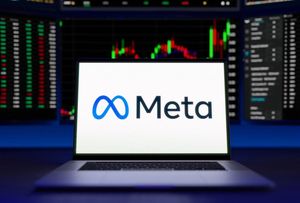
Washington D.C. – October 20, 2025 – As the United States grapples with a persistent legislative stalemate over comprehensive digital asset regulation, a pivotal meeting is on the horizon. This week, on October 22, 2025, a crucial roundtable spearheaded by pro-crypto Senate Democrats, including Senator Kirsten Gillibrand (D-NY), is set to bring together a cohort of the most influential figures in the cryptocurrency industry. This high-stakes gathering aims to reignite discussions on stalled digital asset legislation, particularly focusing on market structure and the contentious issue of Decentralized Finance (DeFi) oversight.
The upcoming roundtable underscores the escalating urgency for regulatory clarity within the US. Despite a pro-crypto shift under the new Trump administration, which has seen the signing of the landmark GENIUS Act for stablecoins, broader market structure legislation remains mired in partisan gridlock. This ongoing uncertainty has left the crypto ecosystem in a precarious position, with industry leaders pushing for clear guidelines to foster innovation and prevent capital flight, while lawmakers navigate complex jurisdictional disputes and concerns over illicit finance. The outcome of these renewed discussions could significantly shape the future trajectory of crypto adoption and innovation in the world's largest economy.
Market Impact and Price Action
The fluctuating landscape of US crypto regulation has consistently been a significant driver of market sentiment and price action. While the immediate market reaction to the announcement of the October 22nd roundtable has been one of cautious optimism, the broader trend reflects the impact of both legislative successes and persistent impasses. The passage of the GENIUS Act (Guiding and Establishing National Innovation for U.S. Stablecoins Act of 2025) in July 2025 provided a much-needed boost to the stablecoin sector, solidifying their regulatory framework and potentially increasing their utility as transactional instruments. This clarity has likely contributed to the stability and growth of major stablecoins like Tether (USDT) and USD Coin (USDC), reinforcing their role as a foundational layer for the broader crypto economy.
Conversely, the ongoing stalemate regarding comprehensive market structure legislation, particularly the CLARITY Act (Digital Asset Market Clarity Act) which passed the House in July 2025 but remains pending in the Senate, continues to cast a shadow over Bitcoin (BTC) and Ethereum (ETH). While these assets are widely expected to be classified as digital commodities under such legislation, the delay in formalizing this distinction leaves them vulnerable to regulatory arbitrage and creates uncertainty for institutional investors. Trading volumes for these major cryptocurrencies tend to react sharply to news of legislative progress or breakdown, with periods of stalemate often correlating with range-bound trading as investors await clearer direction.
Technical analysis of major cryptocurrencies like Bitcoin and Ethereum shows key support and resistance levels often tested during periods of significant regulatory news. A definitive legislative breakthrough on market structure, especially one that clearly delineates the roles of the SEC and CFTC, could trigger a bullish breakout. Conversely, a prolonged stalemate or the introduction of overly restrictive proposals, such as the controversial leaked Democratic DeFi proposal, could lead to downward pressure, testing crucial support levels as seen in early October 2025 when bipartisan talks reportedly crashed. The market's sensitivity to these developments underscores the critical importance of the upcoming executive-lawmaker dialogues.
Community and Ecosystem Response
The crypto community's response to the ongoing regulatory saga has been a mix of frustration, advocacy, and cautious optimism. Social media platforms like X (formerly Twitter) and Reddit are abuzz with discussions, with many users expressing exasperation over the slow pace of legislative progress despite growing industry maturity. The consensus among many retail investors and enthusiasts is a strong desire for clear, innovation-friendly regulations that would allow the US to compete with jurisdictions like the EU, which has already implemented comprehensive frameworks like MiCA.
Crypto influencers and thought leaders have been particularly vocal, often criticizing proposals perceived as stifling innovation or overly broad. The leaked Democratic proposal for DeFi regulation earlier in October 2025, which industry experts argued could "effectively ban" decentralized finance and self-custody wallets in the US, drew widespread condemnation. This backlash highlights the community's fierce defense of decentralization principles and the importance of preserving the open nature of Web3. Organizations like the Digital Chamber of Commerce and the Blockchain Association have ramped up their lobbying efforts, deploying significant resources to educate lawmakers and advocate for sensible policies.
The effects on related DeFi protocols, NFT projects, and Web3 applications are tangible. Regulatory uncertainty can deter new projects from launching in the US, potentially pushing innovation overseas. While the GENIUS Act provided a clear path for stablecoins, the lack of clarity for other digital assets impacts everything from liquidity provision in DeFi to the legal standing of NFTs. The upcoming Senate roundtable is therefore viewed by the ecosystem as a critical opportunity to convey the industry's concerns directly to policymakers and to push for a regulatory framework that supports, rather than hinders, the vibrant innovation happening within the Web3 space.
What's Next for Crypto
The immediate future of US crypto regulation hinges significantly on the outcomes of the upcoming October 22nd Senate roundtable and the subsequent legislative maneuvering. Short-term implications could include renewed bipartisan efforts on market structure, particularly if the discussions yield common ground on defining digital asset classifications and jurisdictional oversight between the Securities and Exchange Commission (SEC) and the Commodity Futures Trading Commission (CFTC). A positive signal from this meeting could inject a fresh wave of optimism into the market, potentially leading to increased institutional investment and a more favorable environment for crypto startups.
In the long term, the implications are profound. If the US can establish a clear, comprehensive regulatory framework, it could solidify its position as a global leader in digital asset innovation, attracting talent and capital. Key developments to watch include the Senate's consideration of the CLARITY Act, which aims to define when a digital asset is a security versus a commodity, and the Anti-CBDC Surveillance State Act, which seeks to prevent a US central bank digital currency (CBDC) without congressional approval. The ongoing debate between the House-passed CLARITY Act and the Senate Banking Committee's alternative Responsible Financial Innovation Act of 2025 (RFIA) discussion draft will be crucial in determining the final shape of market structure legislation.
Strategic considerations for projects and investors include closely monitoring legislative updates, engaging with advocacy groups, and preparing for potential shifts in compliance requirements. Projects may need to adapt their operations based on how assets are classified and which regulator has primary jurisdiction. Investors should be aware that while a pro-crypto administration offers tailwinds, the legislative process remains complex and subject to political headwinds, including the looming 2026 midterm elections, which could further delay progress. Possible scenarios range from a breakthrough leading to comprehensive legislation by early 2026 to continued partisan deadlock, pushing significant reforms even further into the future.
Bottom Line
For crypto investors and enthusiasts, the current period represents a critical juncture in the evolution of US digital asset policy. The proactive engagement between crypto executives and lawmakers, exemplified by the upcoming Senate roundtable, signals a maturing industry determined to shape its own regulatory destiny. While the passage of the GENIUS Act for stablecoins was a significant victory, the broader quest for a comprehensive market structure remains the ultimate prize, promising to unlock further innovation and mainstream adoption.
The long-term significance of these ongoing dialogues cannot be overstated. A clear, well-defined regulatory framework is essential for fostering a secure, compliant, and thriving crypto ecosystem within the United States. Without it, the risk of brain drain and capital flight to more accommodating jurisdictions remains a persistent threat. The ability of lawmakers to bridge partisan divides and craft legislation that balances innovation with consumer protection and financial stability will be the defining challenge.
As we move forward, important dates and metrics to monitor include the outcomes of congressional hearings, the progress of key bills like the CLARITY Act and RFIA, and any further executive actions from the Trump administration. Furthermore, the sentiment of key regulatory bodies like the SEC and CFTC, especially under new leadership, will continue to influence enforcement actions and policy interpretations. The journey toward regulatory clarity is complex and arduous, but the sustained engagement between industry and government offers a glimmer of hope for a more predictable and prosperous future for crypto in the US.
This article is for informational purposes only and does not constitute financial or investment advice. Cryptocurrency investments carry significant risk.






